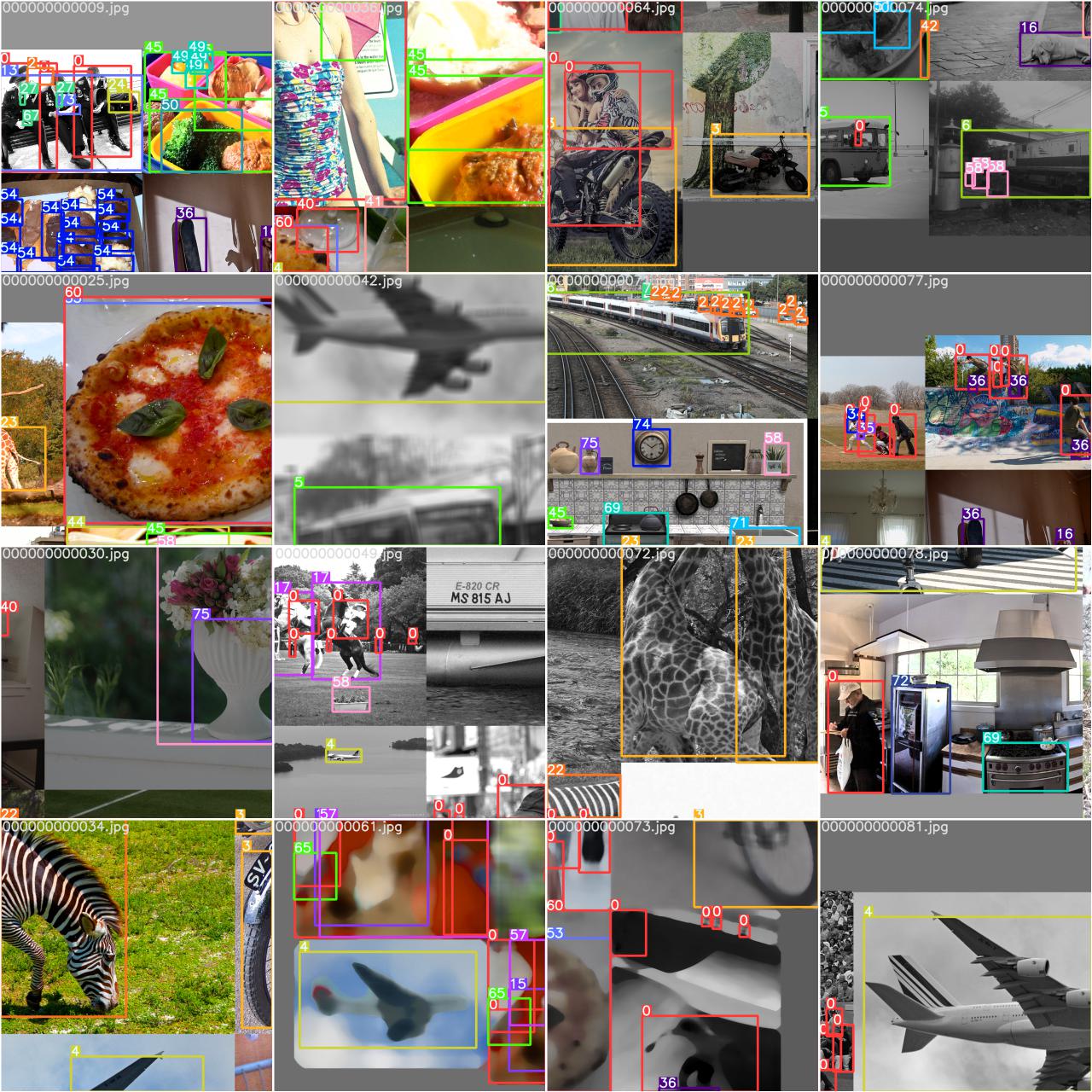-
-
Notifications
You must be signed in to change notification settings - Fork 16.6k
New issue
Have a question about this project? Sign up for a free GitHub account to open an issue and contact its maintainers and the community.
By clicking “Sign up for GitHub”, you agree to our terms of service and privacy statement. We’ll occasionally send you account related emails.
Already on GitHub? Sign in to your account
Does yolov5 has the data augmentation of flip horizontally ? #1185
Comments
|
Hello @wwdok, thank you for your interest in our work! Please visit our Custom Training Tutorial to get started, and see our Jupyter Notebook If this is a bug report, please provide screenshots and minimum viable code to reproduce your issue, otherwise we can not help you. If this is a custom model or data training question, please note Ultralytics does not provide free personal support. As a leader in vision ML and AI, we do offer professional consulting, from simple expert advice up to delivery of fully customized, end-to-end production solutions for our clients, such as:
For more information please visit https://www.ultralytics.com. |
|
Augmentation hyperparameters are located here: Lines 1 to 33 in 83deec1
|
|
@glenn-jocher Sorry, i find my repo is out of date, the newest repo already has fliplr hypeparameter ! Thanks ! |
|
@wwdok ah, you should |
Hi, bro, I find in the |
|
@wwdok mixed precision is integrated by default now. |
|
@glenn-jocher Great ! 😀 |
|
So in every epochs the data will be augmented according to the probability? |
|
@LogicNg yes every mosaic. |
|
I have a question about the augmentations. I don't understand how the HSV augmentations are generated. For example, we have: What does this do? Is this changing the saturation to 70% of the original? Or is it ± 70%, so 30% and 170%? Or is it a 0.7 probability that the saturation will change? If so, how much will it change by? Will it both increase and decrease? Will it affect every image? Also, for the image rotations, if I put 90, will that be clockwise or anticlockwise? Thank you |
|
@julian-douglas augmentations are defined in your hyperparameter file and implemented in datasets.py. Albumentations may be added additionally, see Albumentations PR. |
|
Thanks for your code. Does the "degree" in hyperparameter files mean rotation augmentation? And what is the range of "degree"? Thanks. |
|
@RainbowSun11Q2H 👋 Hello! Thanks for asking about image augmentation. YOLOv5 🚀 applies online imagespace and colorspace augmentations in the trainloader (but not the val_loader) to present a new and unique augmented Mosaic (original image + 3 random images) each time an image is loaded for training. Images are never presented twice in the same way. Augmentation HyperparametersThe hyperparameters used to define these augmentations are in your hyperparameter file (default yolov5/data/hyps/hyp.scratch-low.yaml Lines 6 to 34 in b94b59e
Augmentation PreviewsYou can view the effect of your augmentation policy in your train_batch*.jpg images once training starts. These images will be in your train logging directory, typically
YOLOv5 Albumentations IntegrationYOLOv5 🚀 is now fully integrated with Albumentations, a popular open-source image augmentation package. Now you can train the world's best Vision AI models even better with custom Albumentations 😃! PR #3882 implements this integration, which will automatically apply Albumentations transforms during YOLOv5 training if Example Good luck 🍀 and let us know if you have any other questions! |
|
Can I indicate how many images exactly to be generated. |
|
@Bara-Elba 👋 Hello! Thanks for asking about image augmentation. YOLOv5 🚀 applies online imagespace and colorspace augmentations in the trainloader (but not the val_loader) to present a new and unique augmented Mosaic (original image + 3 random images) each time an image is loaded for training. Images are never presented twice in the same way. Augmentation HyperparametersThe hyperparameters used to define these augmentations are in your hyperparameter file (default yolov5/data/hyps/hyp.scratch-low.yaml Lines 6 to 34 in b94b59e
Augmentation PreviewsYou can view the effect of your augmentation policy in your train_batch*.jpg images once training starts. These images will be in your train logging directory, typically
YOLOv5 Albumentations IntegrationYOLOv5 🚀 is now fully integrated with Albumentations, a popular open-source image augmentation package. Now you can train the world's best Vision AI models even better with custom Albumentations 😃! PR #3882 implements this integration, which will automatically apply Albumentations transforms during YOLOv5 training if Example Good luck 🍀 and let us know if you have any other questions! |
I try many time on this, but the result of args.yaml shown not correct with the modification.
data_aug.yml file: Ultralytics 🚀 AGPL-3.0 License - https://ultralytics.com/licenseTrain/val/test directorypath: C:/srt/raw_data/datasets_resized2 # dataset root dir Classesnames: this parameters are all zero since we want to use albumentation frameworkfl_gamma: 0.0 # focal loss gamma (efficientDet default gamma=1.5)
Could u tell me the correct way to modify the parameters in yaml file? instead of set in the train code. Since if I set in the train, it works (results = model.train(data=yaml, epochs=1, imgsz=640, fliplr=1) |
|
For YOLOv5 augmentation parameter modifications, create a custom hyp.yaml file (copy from hyp.scratch.yaml) with your desired values, then train with |
|
Thank you so much... |
|
You're welcome! We're glad you find YOLOv5 useful. All credit goes to our amazing open-source community and contributors. Let us know if you have any specific questions as you explore the project further! 🚀 |






❔Question
I see some basic data augmentations in train.py, but i don't see flip horizontally and mosaic and so on, so does yolov5 support other more data augmentations ?
The text was updated successfully, but these errors were encountered: